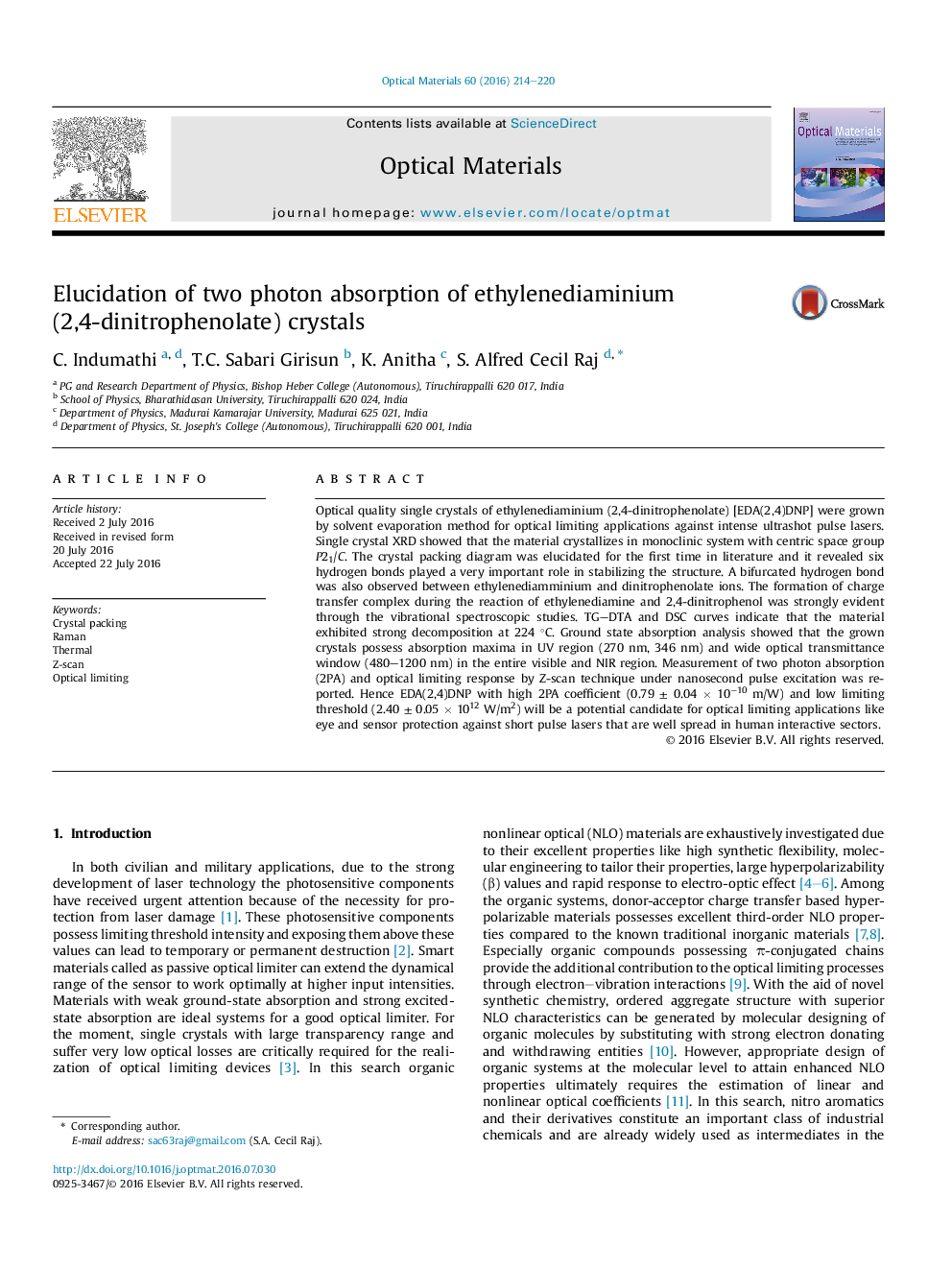| Article ID | Journal | Published Year | Pages | File Type |
|---|---|---|---|---|
| 1493210 | Optical Materials | 2016 | 7 Pages |
•Ethylenediamminium (2,4-dinitrophenolate), a novel organic optical limiting active material is grown as single crystals.•The crystal packing is solved by single crystal XRD and EDA(2,4)DNP crystallizes in P21/C space group.•The formation of charge transfer complex and molecular arrangement was studied by vibrational spectroscopy.•EDA(2,4)DNP exhibits two photon absorption action under short pulse laser excitation (532 nm, 5 ns, 10 Hz, 100 μJ).•EDA(2,4)DNP possess high NLO absorption co-efficient of 0.79 × 10−10 m/W and low limiting threshold of 2.4 × 1012 W/m2.
Optical quality single crystals of ethylenediaminium (2,4-dinitrophenolate) [EDA(2,4)DNP] were grown by solvent evaporation method for optical limiting applications against intense ultrashot pulse lasers. Single crystal XRD showed that the material crystallizes in monoclinic system with centric space group P21/C. The crystal packing diagram was elucidated for the first time in literature and it revealed six hydrogen bonds played a very important role in stabilizing the structure. A bifurcated hydrogen bond was also observed between ethylenediamminium and dinitrophenolate ions. The formation of charge transfer complex during the reaction of ethylenediamine and 2,4-dinitrophenol was strongly evident through the vibrational spectroscopic studies. TG–DTA and DSC curves indicate that the material exhibited strong decomposition at 224 °C. Ground state absorption analysis showed that the grown crystals possess absorption maxima in UV region (270 nm, 346 nm) and wide optical transmittance window (480–1200 nm) in the entire visible and NIR region. Measurement of two photon absorption (2PA) and optical limiting response by Z-scan technique under nanosecond pulse excitation was reported. Hence EDA(2,4)DNP with high 2PA coefficient (0.79 ± 0.04 × 10−10 m/W) and low limiting threshold (2.40 ± 0.05 × 1012 W/m2) will be a potential candidate for optical limiting applications like eye and sensor protection against short pulse lasers that are well spread in human interactive sectors.
Graphical abstractFigure optionsDownload full-size imageDownload high-quality image (100 K)Download as PowerPoint slide
